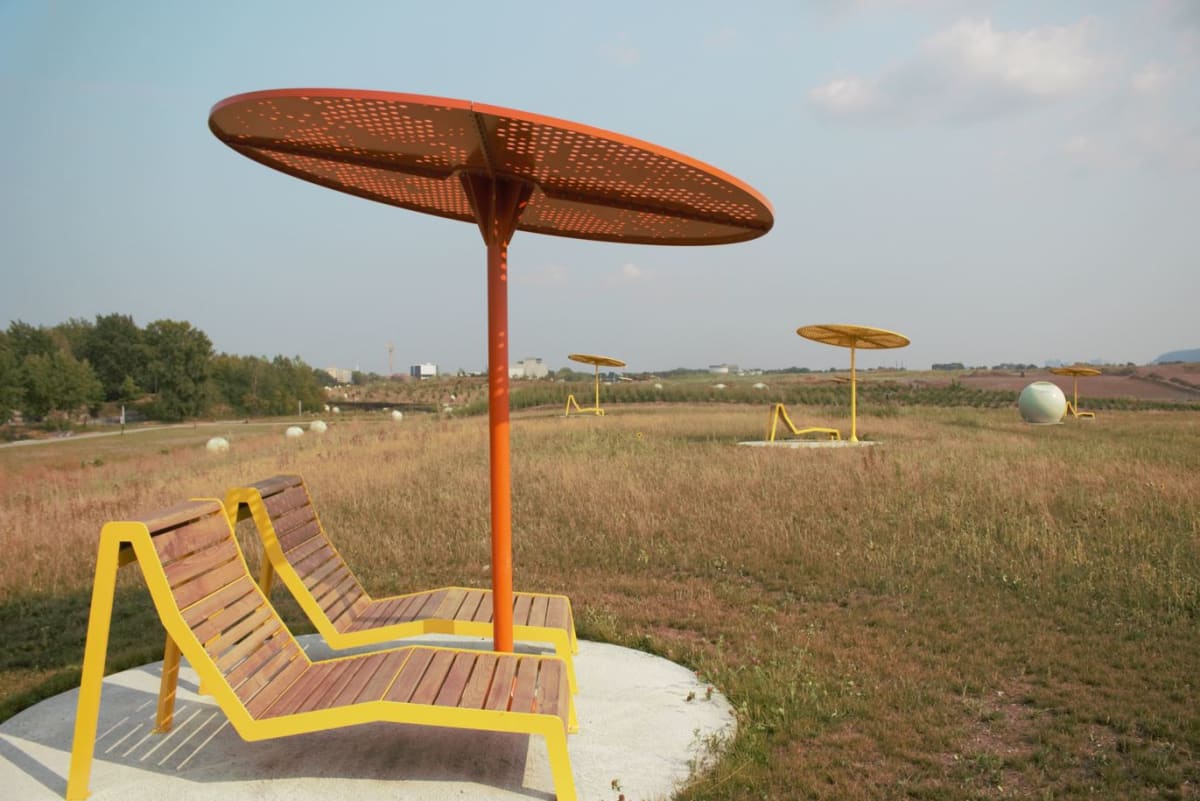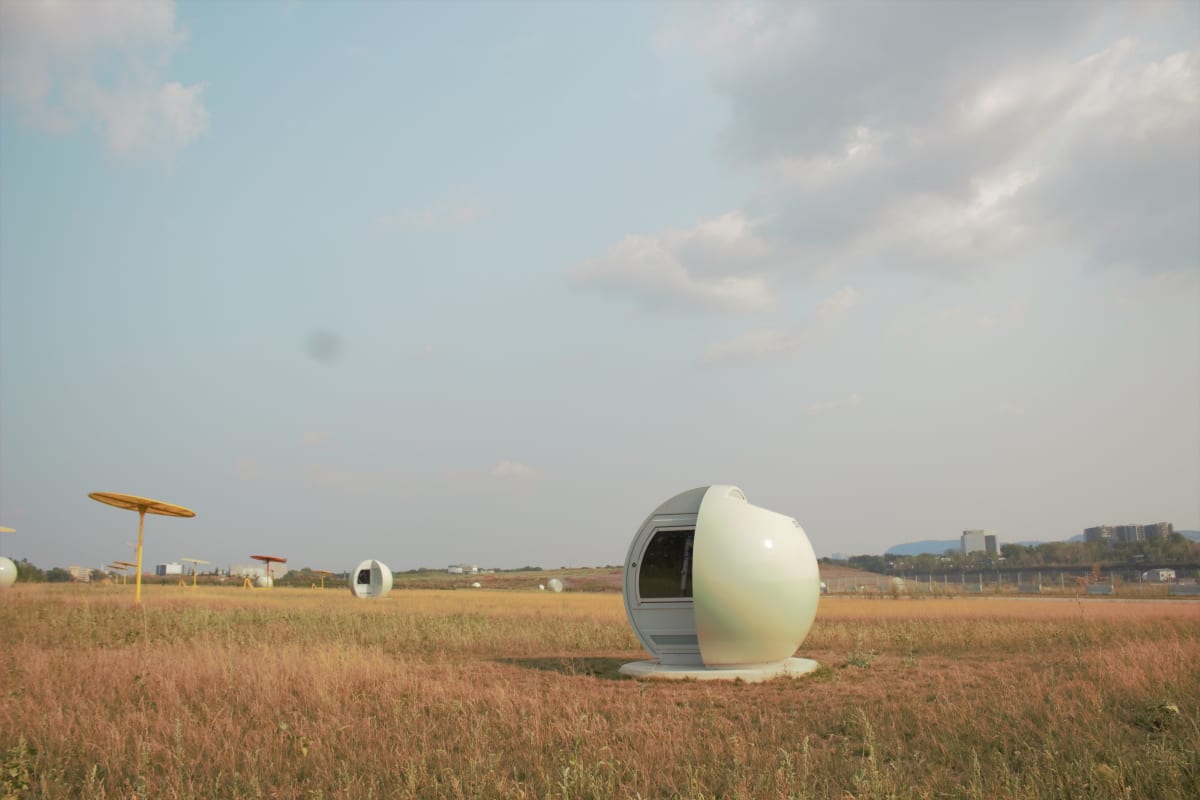Parc Frédéric-Back: A unique metamorphosis
The park’s transformation began in 1995. Today it is one of the most ambitious environmental rehabilitation projects ever seen in a North American urban setting.
Parc Frédéric-Back, which is located in the centre of the Complexe environnemental de Saint-Michel (CESM), is a bold transformation of a former limestone quarry that had become a waste landfill site. Once work is completed, the park will occupy 153 of the 192 hectares encompassed by the CESM. It will include several sectors, offering different experiences. Covering an area similar to that of Mount Royal Park, Parc Frédéric-Back will be one of the largest green spaces in Montréal.
This metropolitan park offers a variety of activities—cultural, educational, sports and recreational—which contribute to the quality of life of nearby residents and all of Montréal.
New elements
Elements inaugurated in summer 2021 (the Plaine Est, Boisé Sud, Jarry Est and Iberville Nord areas), mean an expansion of no less than 14 additional hectares (about the same as 20 football fields) in the centre of the park, as well as the complete redesign of the existing five hectares. Picnic areas, lookouts, rest areas, chaises-lounges, colourful parasols—and the now-famous white spheres are scattered throughout the new space.
Promoting a circular economy
Several metric tonnes of material have been reused during this development phase:
- 200,000 metric tonnes of excavated soil
- 40,000 metric tonnes of sand
- 10.000 metric tonnes of gravel
- 24,000 metric tonnes of leaves, composted on-site
- 10,000 metric tonnes of wood chips collected during the city’s tree pruning projects
These recycled materials were used to build benches (from felled ash trees), and lay out new roads and trails (from matter collected from cliff rockfalls). The ground in the park is entirely composed of soil transferred from construction sites, wood chips from ash trees, compost of leaves collected on Montréal streets, and sand, some of which was collected after flooding.
In order to make the park green, and reduce the heat island effect, no fewer than 525 trees, 17,800 bushes and perennials and more than five types of herbaceous plants have been planted in the new area. They require little water and are adapted to the particular conditions of the site. Their maintenance follows an approach that promotes biodiversity and has a low ecological footprint.
Audacious landscape design
Given their colossal scale, development of the park posed constant challenges, which the landscape architects treated as an opportunity to create a unique design. The small landfill sites filled with waste became plains of herbaceous plants. They are unlikely to be disturbed by the decomposition of the garbage. The channels created to manage rainwater run-off became a habitat of flowering plants, butterflies and other pollinators. On the hill formed by solid waste, a wooded area was designed to allow users to enjoy the public art and the city panoramas. Finally, in the shadow of the old quarry cliffs, an artificial lake offers nautical and sporting activities.
Those intriguing spheres
White spheres have become a major visual symbol of the site. They are a reflection of its history. Under your feet, 40 million metric tonnes of waste continues to decompose, producing biogases and a liquid, called leachate. These two elements are closely managed by Montréal to prevent any air, soil or water contamination.
Beyond offering intriguing images, the spheres are used to cover the biogas capture wells. Methane contained in the biogas is one of the principal causes of climate change. Underground, more than 200 capture wells, connected by a 17-kilometre network, pump the biogas to a power plant where it is used to produce electricity. The unique design of the spheres won the 2018 Grand prix du design, in the Urban Furniture category.
An exemplary rehabilitation project
In addition to highlighting the history and spectacular landscapes of the site, this park can help people understand the role of all these species in urban nature, and understand sustainable design choices that encourage biodiversity and create of sustainable ecosystems. Its exemplary rehabilitation, which has been a source of inspiration worldwide, has encouraged birds, insects, small mammals and amphibians to return to what was once a hostile environment—to the delight of nature lovers
For further information on the activity program: tohu.ca
Need help?
Contact us if you have questions.
Are you sure you want to leave this page?
This page is not available in English. You will be redirected to the English home page.


